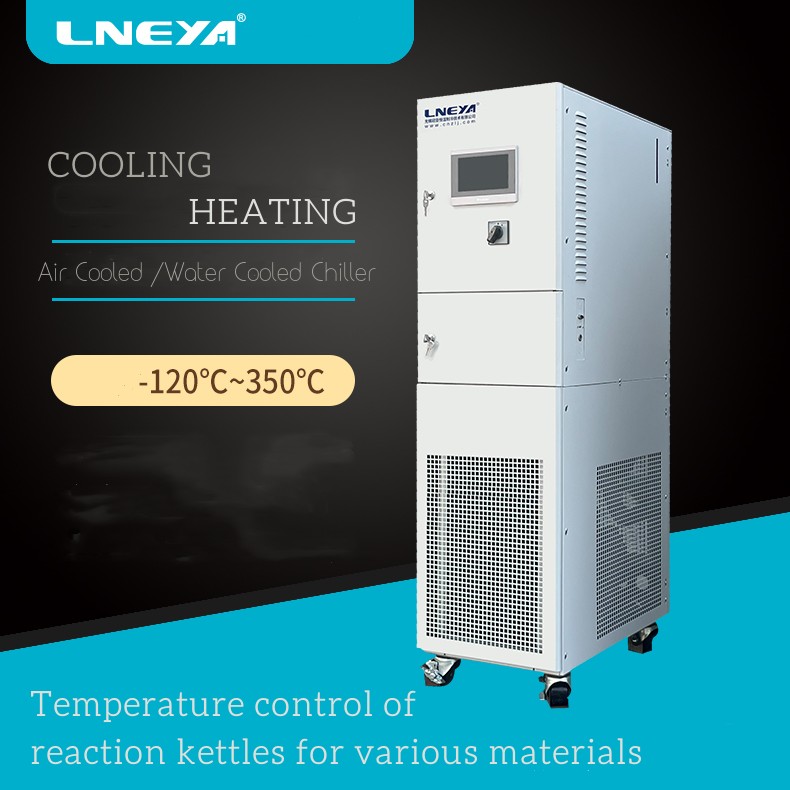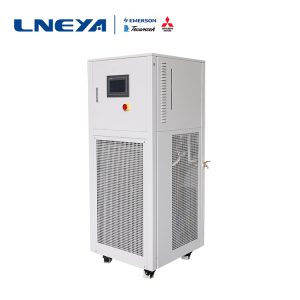What should I do if there is noise from industrial cooling and heating chillers?

The industrial cooling and heating temperature control equipment adopts a PID algorithm temperature control system to accurately adjust the temperature based on the detected temperature and the set temperature value, improving the drawbacks of traditional manual control of the reaction kettle.
1. The industrial cooling and heating temperature control equipment, the chiller circulating pump, converts electrical energy into mechanical energy to promote the liquid phase circulation of the heat transfer oil, and transfers heat to the reaction kettle. The heat transfer oil exchanges with the materials in the reaction kettle and then returns to the oil heater, where it is heated again under the pressure of the pump and enters the next cycle. Through repeated cycles, heat is transferred and transported, heated and cooled, or the temperature of the reactor is maintained to meet the temperature requirements required by the production process.
2. When high noise occurs during the operation of the industrial cooling and heating temperature control equipment, the chiller needs to be inspected and promptly addressed if any problems are found. The internal components of the industrial grade cold and hot temperature control thermostat are excessively worn, such as the wear and tear of the cylinder body and valve plate of the plunger pump, as well as the wear and tear of the matching parts between the plunger and the plug hole, causing serious internal leakage in the pump. When the pump outputs high-pressure and low flow oil, flow pulsation will occur, causing high noise.
3. The pump valve plate is also one of the important components that can easily cause noise. Industrial cooling, heating, and temperature control equipment. During use, the water chiller may shorten the unloading groove and change the unloading position due to surface wear or oil sludge deposition at the opening of the unloading groove, resulting in oil trapping and higher noise.
4. When air is mixed into the cold water oil of industrial cooling and heating temperature control equipment, it is easy to form cavitation phenomenon in its high-pressure zone, which spreads in the form of pressure waves, causing oil oscillation and causing cavitation noise in the system.
Raccomandazioni correlate
-
Effetto dello strumento evaporatore per l'esperimento a bassa temperatura sul sistema di refrigerazione
1135In base ai diversi modelli, anche la scelta degli evaporatori per gli strumenti speciali per esperimenti a bassa temperatura è diversa, come gli strumenti speciali per esperimenti a bassa temperatura di tipo box, che utilizzano un evaporatore a serpentina ...
Visualizza i dettagli -
Dual-channel chillers for semiconductor manufacturing industry
938Dual-channel chillers are used in a variety of processes in the semiconductor manufacturing industry. The main purpose is to provide precise temperature control to ensure that the equipment in the semiconductor manufacturing process operat...
Visualizza i dettagli -
Analisi delle cause del rumore generato dal funzionamento dei refrigeratori a bassa temperatura
993Noise is common in the operation of industrial equipment. There are many reasons for noise, which may be caused by some environmental problems in the installation. When noise is generated, we must first confirm the cause and whether it is an inter...
Visualizza i dettagli -
Precautions for the use of molecular distillation cooling and heating temperature control
996The SUNDI series of LNEYA refrigeration and heating temperature control system are used together to control the temperature in the process of molecular distillation. What should be paid attention to in use? If the molecular distillation method ca...
Visualizza i dettagli
 Refrigeratori industriali LNEYA Produttore Fornitore
Refrigeratori industriali LNEYA Produttore Fornitore













